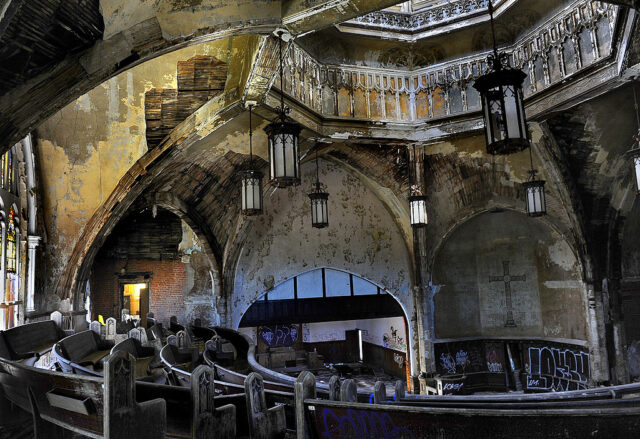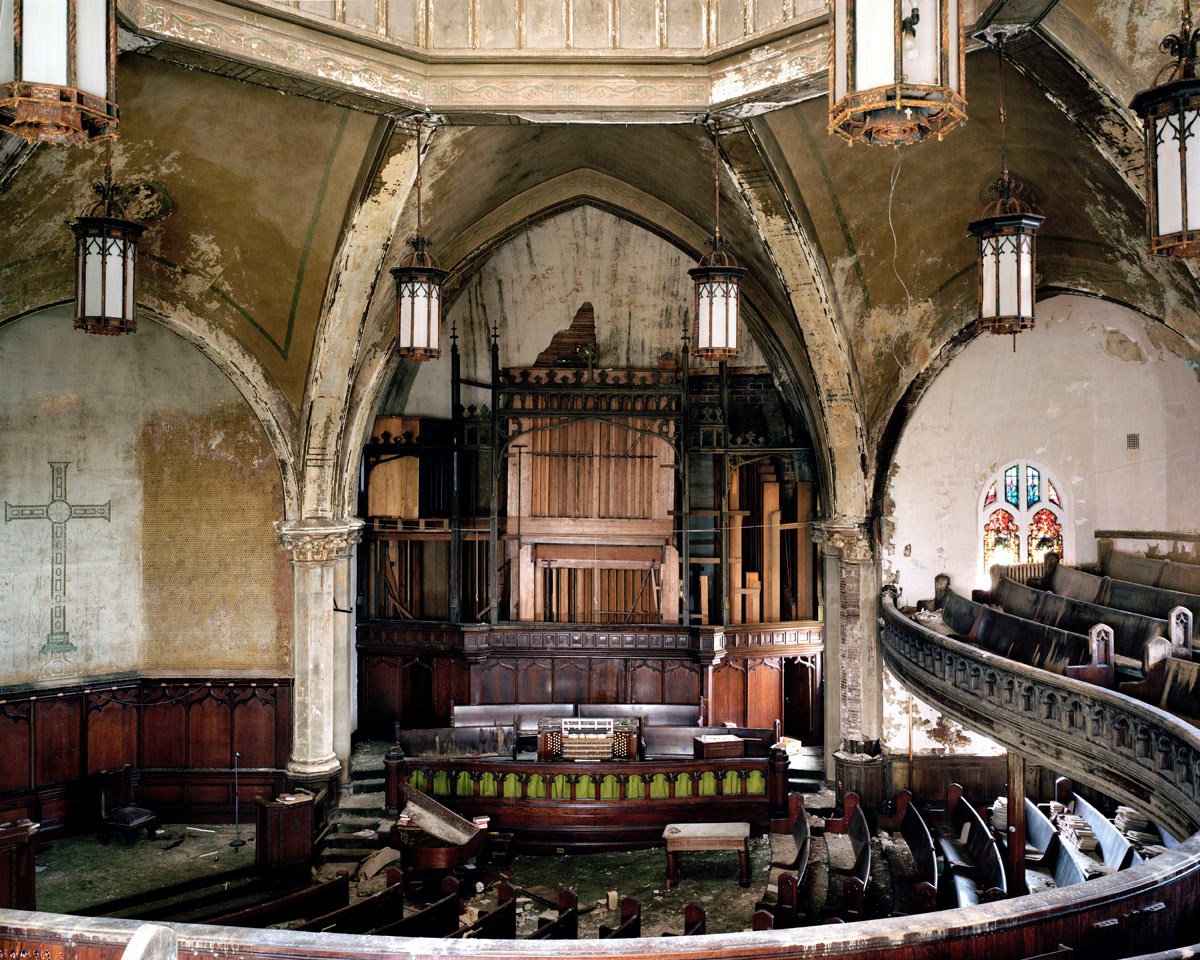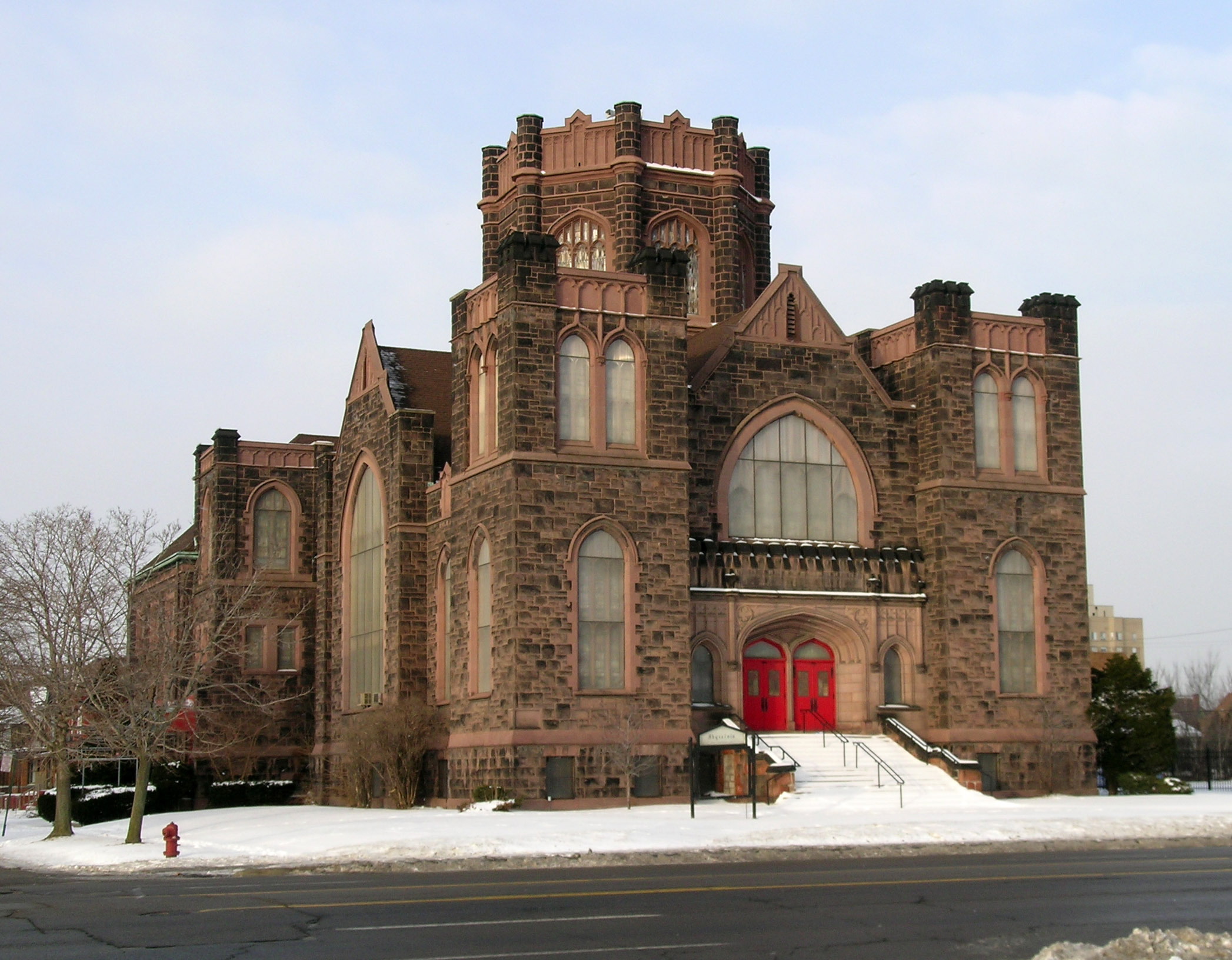Overview
The Woodward Avenue Presbyterian Church, located at 8501 Woodward Avenue in Detroit, Michigan, stands as a testament to early 20th-century Gothic Revival architecture. Designed by Sidney Badgley and completed in 1911, this historic structure has been an integral part of Detroit’s ecclesiastical and cultural landscape. Although it has faced challenges and periods of abandonment, efforts to restore and preserve its grandeur continue.

Historical Background
Founding and Early Years In the early 20th century, the northern Woodward area of Detroit saw a growing need for a Presbyterian church to serve its expanding community. In response, the presbytery organized a new congregation on March 17, 1908, starting with 163 members. The first minister, Rev. Sherman L. Divine, spearheaded a significant building project, envisioning a sanctuary that would cost approximately $100,000, equivalent to about $3.39 million in today’s dollars.

Construction and Dedication Thanks to the generosity of Tracy and Katherine McGregor, who donated a lot along Woodward Avenue, the cornerstone of the church was laid on January 1, 1910. The architectural design by Sidney Rose Badgley came to life, and the church was dedicated on June 23, 1911. By 1921, the congregation had grown to over 2,200 members.

Decline and Merger The mid-20th century brought significant demographic changes as many members moved to Detroit’s northern suburbs. By 1961, membership had dwindled to fewer than 1,000, and by 1971, it was only 404. In 1981, Woodward Avenue Presbyterian merged with Covenant Church, but even combined, the congregation struggled to maintain a robust membership, falling to 210 by 1991. The congregation eventually split from the Presbyterian church in 1993, becoming the Abyssinia Interdenominational Church under Pastor Gary Douglas, but closed following his death in 2005.

Recent Developments Ownership of the property changed multiple times, with none able to sustain the maintenance of the large property. In a hopeful turn, an information technology company acquired the church at a foreclosure sale and began restoration efforts, including roof replacement and structural stabilization. However, progress halted in 2019 when the company was barred from doing business with the city due to a bribery scandal. As of 2020, further repairs had yet to be reported.

Architectural Significance
Gothic Revival Style The Woodward Avenue Presbyterian Church is an exemplary model of English Gothic-style architecture. The exterior features rough rock faces with contrasting limestone trim, and the building measures 184 feet in length and 104 feet in width. The façade along Woodward Avenue is particularly striking, with a massive carved-stone entrance topped by a detailed traceried stained glass window. Two square towers frame this central entrance, adding to the building’s imposing presence.

Structural and Design Elements The church’s side gabled transepts are adorned with full-height traceried windows, allowing light to flood into the interior. At the rear, a two-story educational wing, built simultaneously with the main structure, extends the functional space of the church. A notable feature is the lantern dome, which rises above the roofline and illuminates the auditorium below, creating a dramatic and inviting atmosphere.

Preservation and Future
The Woodward Avenue Presbyterian Church remains a significant historical and architectural landmark in Detroit. Despite its periods of neglect and the challenges of maintaining such a large and intricate structure, efforts to preserve and restore the church continue. The community holds out hope that future initiatives will succeed in fully revitalizing this iconic building, ensuring that its historical and architectural legacy endures for generations to come.


